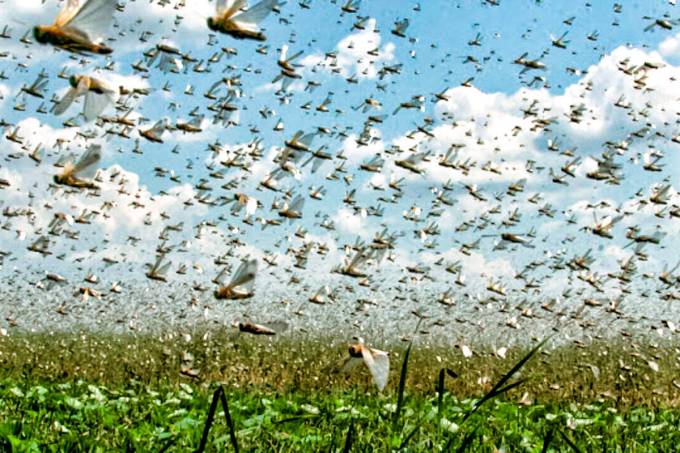RIO DE JANEIRO, BRAZIL – A new grasshopper swarm began to spread through an indigenous area in Rio Grande do Sul, the Inhacorá Reserve, with a large expanse of native vegetation, between the municipalities of São Valério do Sul and Santo Augusto.
Soon after, another area of forest around the cities of Santo Augusto and Chiapeta was the target of insect attacks, which typically ravage the plants.

Currently, there are outbreaks in eight cities in Rio Grande do Sul, among them Bom Progresso and Rendentora. In Bom Progresso and in rural areas, the so-called lubber grasshopper, green and yellow, has been identified.
This species does not grow to a large size, but it is capable of destroying several types of crops by grouping into giant swarms. Typically, the lubber grasshopper damages eggplant, eucalyptus, sugar cane, sunflower, tobacco, rice, and tomato plantations. This insect can also destroy native forest areas.
On the other hand, giant locusts possess a greater destructive power. In the forest areas, which total 400 hectares, inspectors from the Rio Grande do Sul Agricultural Department have identified large areas that have been destroyed. But for now, the insects have not attacked soybean and corn farms, the main commodities produced in the region.
One of the main assumptions for the resurgence of locust clouds is the high temperature that has taken over Rio Grande do Sul and virtually all of Brazil, coupled with humidity. These insects usually reproduce better in climatic conditions that combine heat and humidity.
The southern region was a victim of giant locust waves in mid-year. At the time, massive spraying of insecticides was required to control the insects. This winter’s atypical weather, warmer and wetter, favored the generation and displacement of large locust swarms. One of the swarms came from Argentina.
In June, some 400 million locusts gathered in a giant swarm that extended over ten square kilometers in Paraguay and then reached Argentina and Brazil. This time, no locust swarms have been detected in the same proportion, but the authorities remain on alert.

